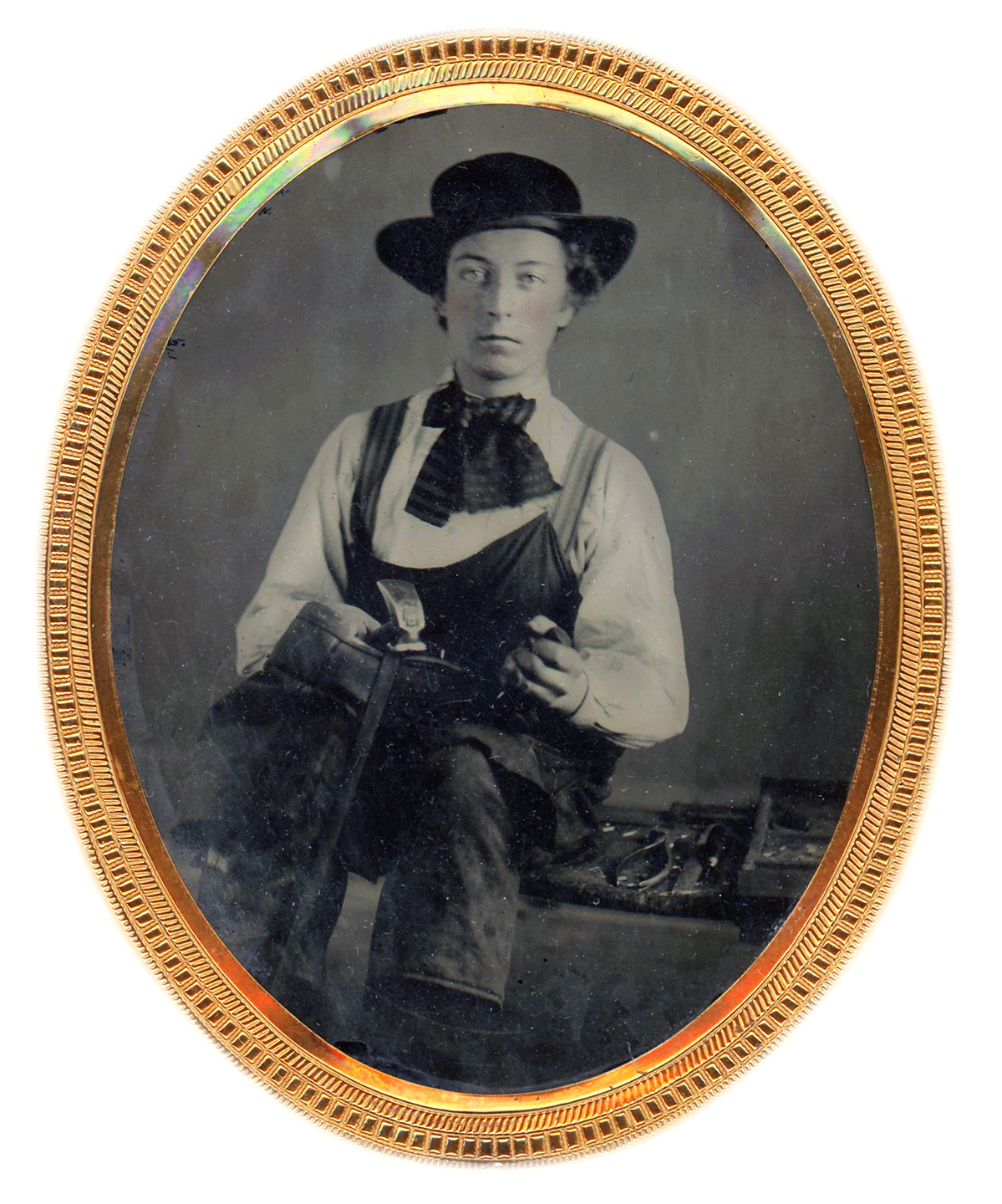This image, likely taken in the 1850s, shows a young shoemaker sitting at his workbench, posed in the act of driving a peg into the sole of a shoe he is making. Pegs were used instead of cord to attach soles on shoes up until the mid-19th century.
This shoemaker doesn’t know it, but his work world is about to change. Vast amounts of shoes were needed for the rapidly growing American population, so it was one of the first vocations to change and industrialize. Instead of shoemakers learning to make an entire shoe through the apprentice, journeymen and master trade system, they were absorbed into assembly line factories where they repetitively made one portion of a shoe.
This process had begun in the early 19th century, but dramatically escalated during and after the Civil War. A song, “Peg and Awl” was even written about the dramatic changes. The following stanza exemplifies a shoemaker’s lament of his loss of independence and ability to control his time:
They’ve invented a new machine peg and awl
They’ve invented a new machine
I peg one shoe it pegs fifteen
I’m gonna lay me down my awl my peg and awl
Technology still brings great, and often traumatic change into the workplace. Recently, the growing power of AI, artificial intelligence, has people concerned about how it could impact the workforce, and it remains to be seen how many people will have to put down their pegs and awls due to yet and change in the way work gets done.
historynet magazines
Our 9 best-selling history titles feature in-depth storytelling and iconic imagery to engage and inform on the people, the wars, and the events that shaped America and the world.


